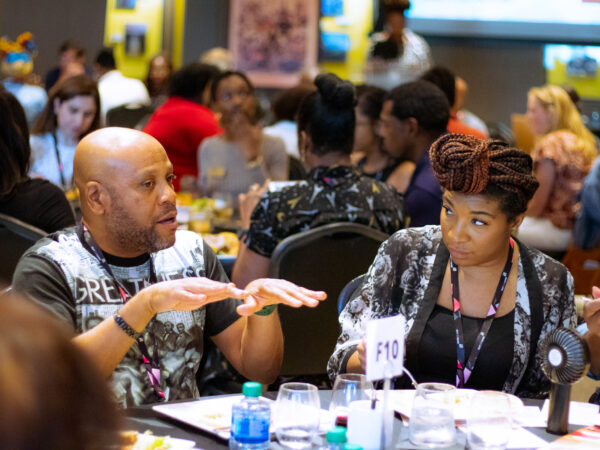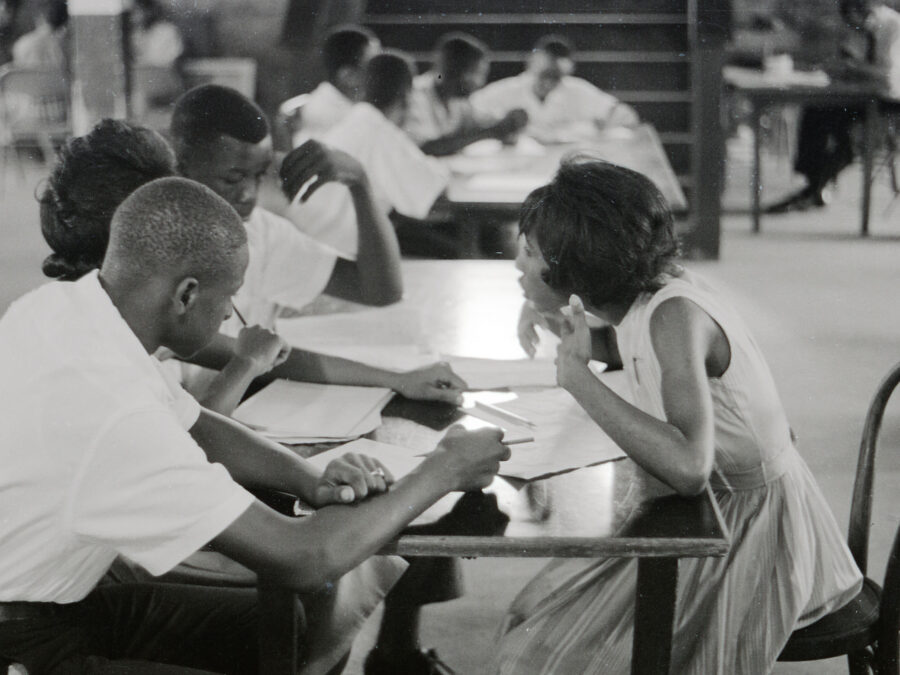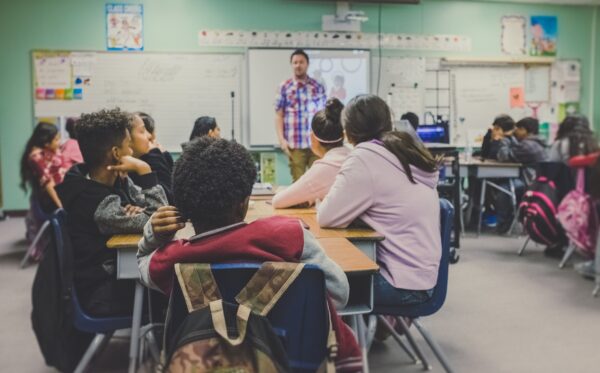To get started on your learning journey, explore our resource categories and get tips for navigating difficult topics with your class.
Implementing the Resources in Your Classroom
Our goal when developing education resources is to create materials focused on posing questions, problems, or scenarios rather than simply presenting established facts or portraying a smooth path to knowledge. Inquiry-based learning can be greatly enhanced by utilizing our diverse collection of resources to support open-ended exploration and critical thinking.
Here are some tips for implementing these resources in your classroom:
Provide Context: Students may be able to engage better in critical thinking if they understand the context behind a particular moment in history. Use the introductory videos, background essays, biographies, and glossaries to help students build understanding before engaging in activities or discussions.
Utilize the Diverse Resource Selection: Different kinds of resources can offer different insights into topics. They may also help to engage students with diverse learning styles. The Learning Portal includes a wide range of resources—including texts, videos, primary sources, and interactive media—to provide students with multiple entry points for exploration and investigation.
Encourage Structured Exploration: Guide students through the process of exploring the resources, asking questions, and identifying patterns or connections to build their critical thinking skills.
Facilitate Collaborative Discussions: Encourage collaborative discussions that allow students to share their insights, ask questions, and challenge each other’s perspectives based on the resources they have explored.
Navigating Difficult Topics
The following tips and resource links were developed in cooperation with our Educator Advisory Council to help you establish a solid foundation for navigating difficult topics with your students.
-
Create a Safe and Respectful Environment
To create a safe and respectful environment for discussing difficult topics with students, it’s important to establish clear guidelines for communication, actively listen to each student’s perspective, and encourage empathy and understanding among classmates.
By setting ground rules, demonstrating respect, and fostering open dialogue, students can feel supported and empowered to engage in challenging discussions while feeling safe and valued. To guide constructive dialogues about race in the classroom, try integrating the Four Agreements of Courageous Conversation.
-
Be Transparent
Clearly communicate the purpose of the conversation and the desired outcomes. Provide relevant information, encourage questions, and actively listen to students’ concerns. Maintain honesty and openness throughout the discussion, and follow up with appropriate support and resources.
By being transparent, educators can navigate difficult conversations while building trust and understanding with their students. Provide students with the opportunity to “know” each other through the ‘who are you’ strategy.
-
Allow Time for Reflection
After discussing a difficult topic, give students time to process the information before expecting their responses. This can be done through individual reflection or small group discussions. Allowing this time for reflection gives them the opportunity to process the information, consider different perspectives, and formulate thoughtful responses. This level of reflection can lead to deeper understanding and more meaningful engagement with challenging content.
Create a talking circle where students gather to discuss a chosen topic. Students can pass if they would like and they can speak when they have a talking tool/object. Stop work periodically to reflect with a peer or in writing.
-
Encourage Constructive Dialogue
Encouraging constructive dialogue in the classroom involves creating a safe and respectful environment where open communication is fostered. This can be achieved through active listening, setting clear guidelines for respectful discussion, offering praise for thoughtful contributions, and emphasizing the value of diverse viewpoints.
By providing opportunities for students to express their opinions and perspectives, educators can enrich classroom discussions and cultivate a culture of mutual respect.
-
Practice Cultural Competency
Cultural competency refers to the ability to understand, communicate with, and effectively interact with people across different cultures. In an educational setting, cultural competency is used by educators to create an inclusive and supportive environment for students from diverse backgrounds. Educators who practice cultural competency strive to integrate diverse perspectives and experiences into the curriculum, foster open discussions about cultural differences, and encourage students to share their own experiences.
By embracing cultural diversity, educators help students develop a deeper understanding and respect for one another, ultimately enriching the educational experience for all.
-
Foster Compassionate Curiosity
In the classroom, compassionate curiosity encourages students to ask questions and seek understanding with empathy and kindness. By fostering an environment of compassionate curiosity, students can engage in respectful discussions and gain a deeper understanding of diverse perspectives. This approach promotes inclusivity and empathy, creating a positive and supportive learning environment.
Additional Support
-

Join the Teachers' Community
Share teaching strategies and connect with other educators addressing these important topics. -

Explore Professional Development
View previously recorded webinars and see upcoming dates for in-person or virtual training opportunities.

